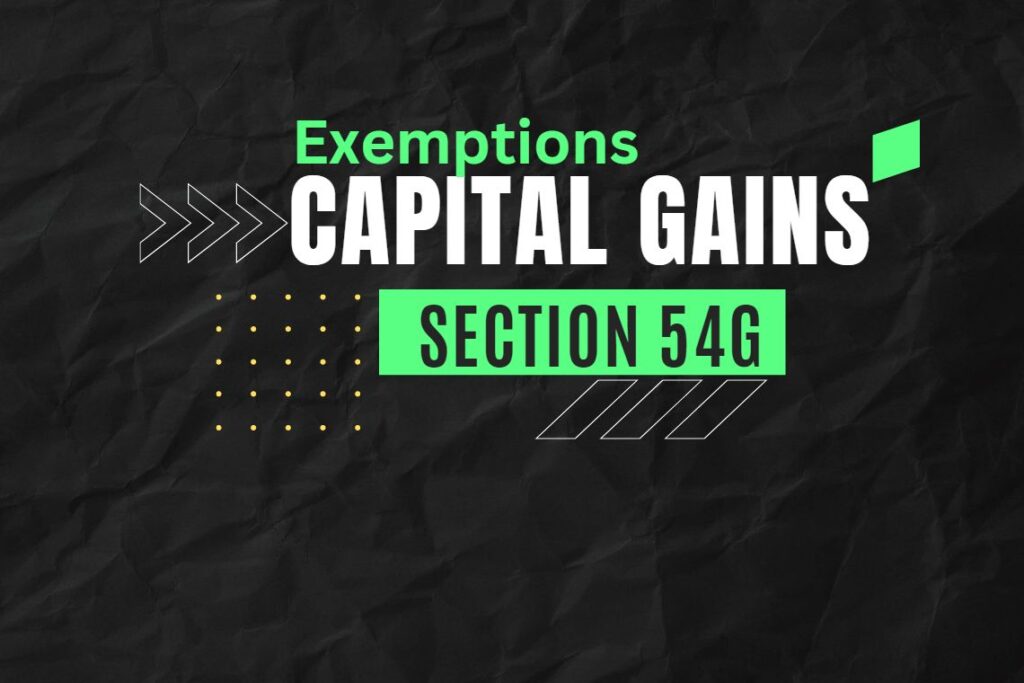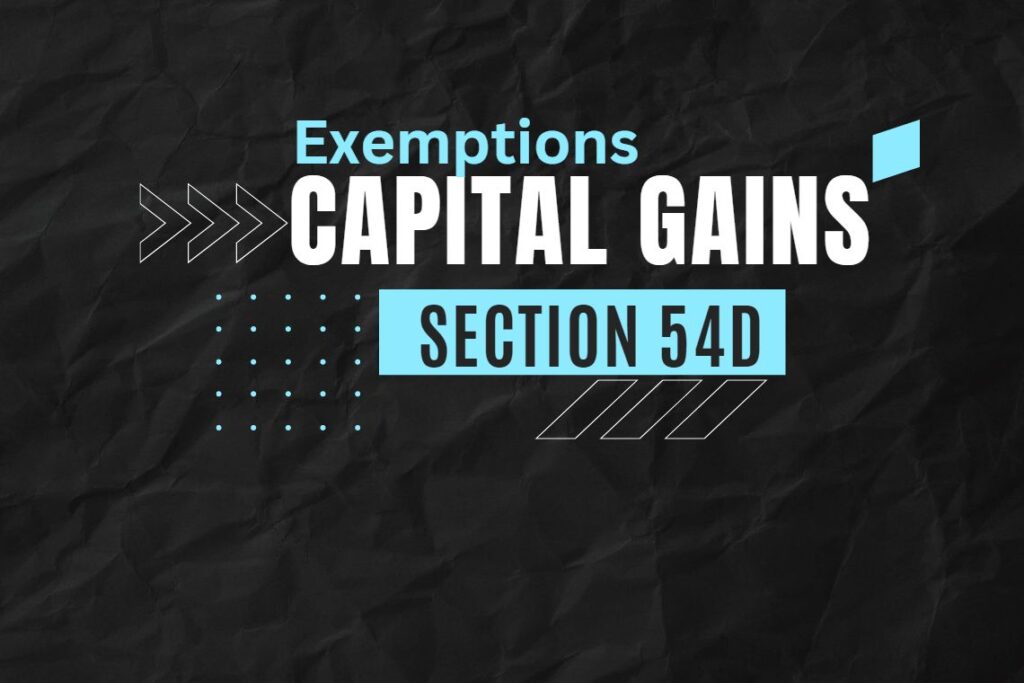Under Section 54G, the Exemption is available to all categories of assessees in respect of Capital Gain arising on the transfer of fixed assets other than furniture and fixtures of industrial undertaking effected to shift it from an urban area.
The conditions for claiming exemptions are as under:
(i) the transfer is effected in the course of or in consequence of shifting the undertaking from an urban area to any other area. Any other area means an area not declared as an urban area.
Urban area’ means any such area within the limits of a municipal corporation or municipality, as the Central Government may, having regard to the population, concentration of industries, need for proper planning of the area and other relevant factors, by general or special order, declare to be an urban area for the purposes of this sub-section;
(ii) asset transferred is machinery, plant, building, land or any right in building or land used for the business of industrial undertaking in an urban area;
(iii) the capital gain arising on the asset transferred may be short-term or long-term capital gain. Normally, it will be short-term capital gain because most of the assets of the industrial undertaking will be depreciable assets;
(iv) the capital gain is utilised within one year before or 3 years after the date of transfer for the specified purpose.
Specified purpose includes the following:
(a) for purchase of new machinery or plant for the purpose of business of the Industrial Undertaking in the area to which the said undertaking is shifted;
(b) acquisition of building or land or construction of building for tax payer’s business in that other area;
(c) expenses on shifting of the old undertaking and its establishment to the other area; or
(d) incurring of expenditure on such other purposes as specified by the Central Government for this purpose.
Quantum of Deduction:
- If the capital gain, on transfer of the original asset, is equal to or less than the cost and expenses incurred for the above specified purposes, the entire capital gain shall be exempt.
- If the capital gain on transfer of the original asset is greater than the cost and expenses incurred for the specified purposes then the exemption shall be allowed to the extent of the cost and expenses incurred.
In other words, capital gain shall be exempt to the extent it is spent for the specified purpose.
Summary :
Section 54G of the Income Tax Act provides relief to taxpayers from paying capital gains tax on the transfer of assets. This section is specifically aimed at promoting industrial development in certain areas by encouraging the transfer of land, buildings, or machinery used for industrial purposes.
Conditions for Exemption
In order to claim the exemption under Section 54G, certain conditions need to be fulfilled:
- The transfer must be of land, building, or machinery used for industrial purposes.
- The transfer must be made to an industrial undertaking located in a notified backward area.
- The taxpayer must have owned the asset for a minimum period of 3 years prior to the transfer.
- The taxpayer must utilize the net consideration received from the transfer to purchase new assets for industrial use within a specified time period.
Quantum of Exemption
The amount of exemption under Section 54G is determined based on the net consideration received from the transfer and the amount utilized for the purchase of new assets. If the entire net consideration is utilized for the purchase of new assets, the entire capital gain is exempted. However, if only a portion of the net consideration is utilized, then the exemption is calculated proportionately.
Example
Let’s consider an example to understand the exemption under Section 54G. Mr. X sells a building used for industrial purposes for a net consideration of ₹1 crore. He utilizes ₹80 lakhs of the net consideration to purchase new machinery for industrial use. In this case, since 80% of the net consideration is utilized, only 80% of the capital gain will be exempted from tax.
Conclusion
Section 54G of the Income Tax Act provides a valuable exemption for taxpayers who transfer assets used for industrial purposes. By encouraging the development of industrial undertakings in backward areas, this section aims to boost economic growth and create employment opportunities. Taxpayers should carefully fulfill the conditions and utilize the net consideration received from the transfer to maximize the exemption under Section 54G.
Scheme of Deposit in Capital Gains Accounts Scheme, 1988:
The amount of capital gain which is not utilised by the assessee towards the cost and expenses specified, before the date of furnishing of the return of income, shall be deposited, before the due date of the furnishing of the return, in a capital gains account scheme. The proof of such deposit shall be attached with the return. In this case the amount already utilised by the assessee for the specified purpose, along with the amount so deposited shall he deemed to the cost/expenditure specified and shall be eligible for exemption.
Consequences where the amount deposited in the Capital Gains Accounts Scheme is not utilised for the specified purpose within the specified period:
The amount not so utilised shall be charged as capital gains, short-term or long-term depending upon the capital gain on the original transfer, of the previous year in which the period of 3 years from the date of transfer of the original asset expires. In this case, the assessee shall be eligible to withdraw the amount from the scheme.
Consequences where the new asset is transferred within a period of 3 years of its purchase or construction:
In this case, the capital gain, which was exempt earlier u/s 54G, shall be deducted from the cost of acquisition of the new asset for the purpose of computation of capital gain in respect of the transfer of the new asset.











